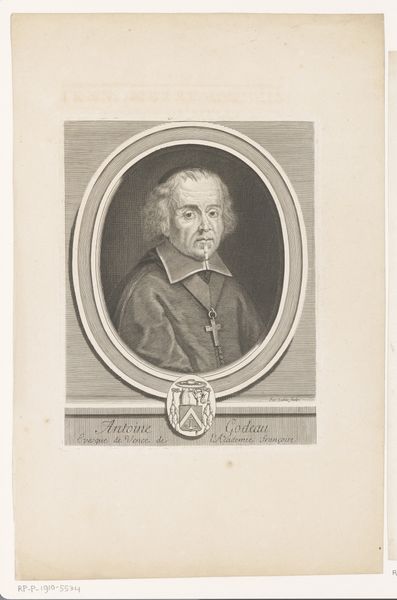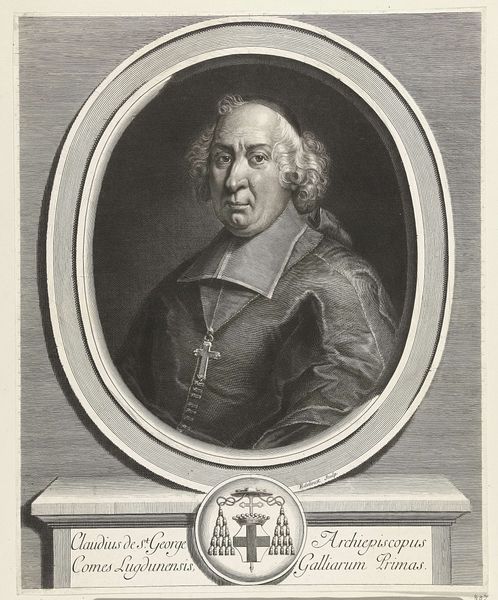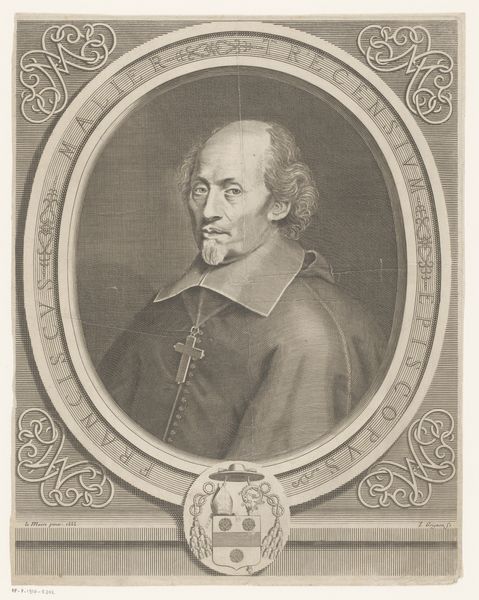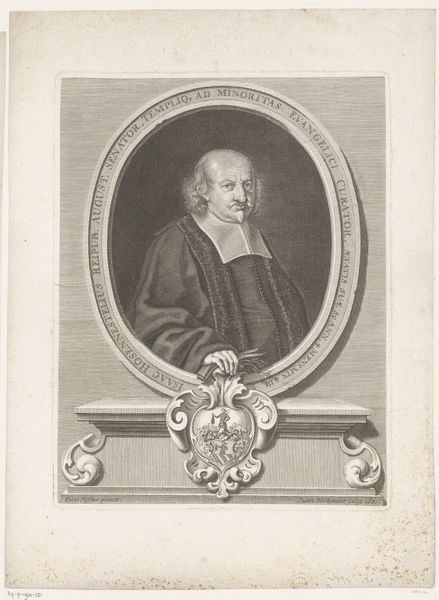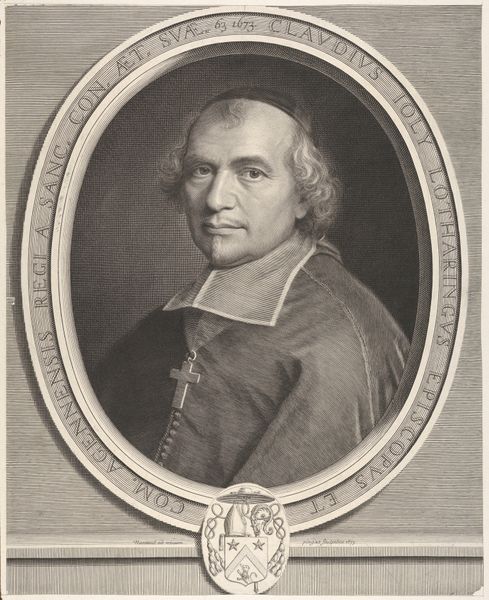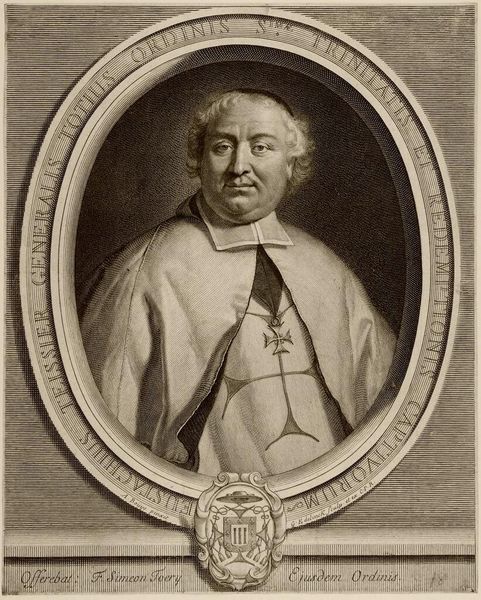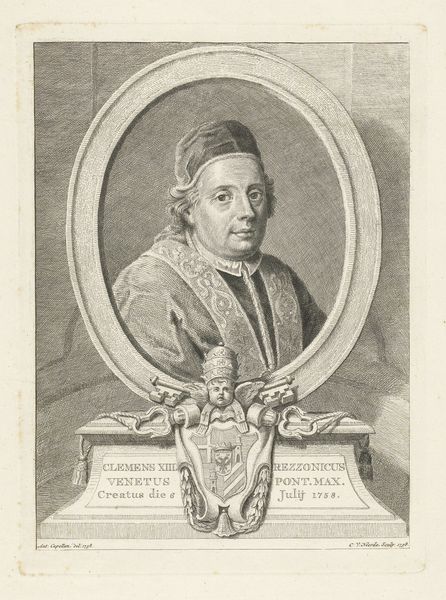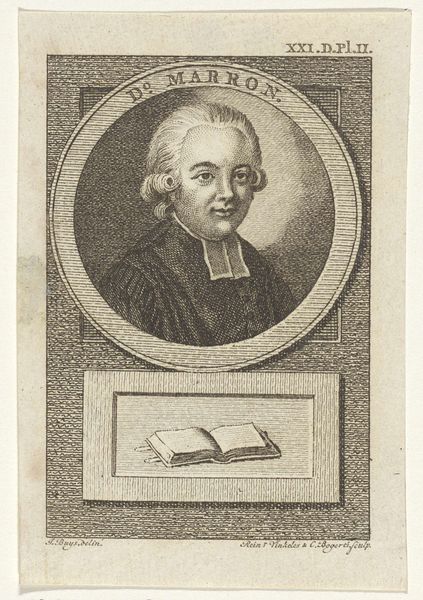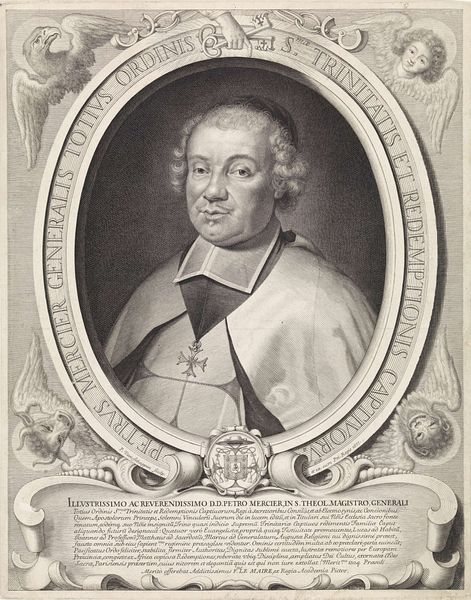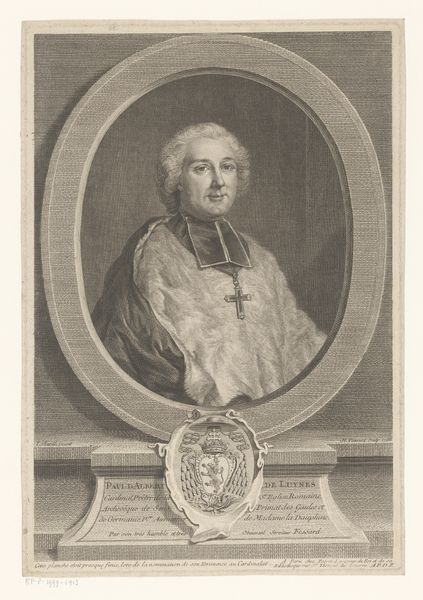
Copyright: CC0 1.0
Curator: This is Jacques Lubin’s portrait of Antoine Godeau, housed here at the Harvard Art Museums. It appears to be an engraving. My immediate impression is one of formality, and perhaps a touch of melancholy. Editor: That’s interesting. The symbols seem much more assertive to me. The cross, the bishop’s coat of arms, the academic insignia... Godeau’s identity is clearly defined through these visual markers of power and prestige. Curator: Indeed. The choice of symbols reflects his status, but let’s consider the broader social context. What role did portraiture play in constructing and reinforcing social hierarchies during the 17th century? Editor: Precisely. Think of the politics embedded within images. The artist's hand here serves to bolster Godeau’s position within the church and academy. It's a public declaration, a piece of visual rhetoric. Curator: And how might these symbols resonate with viewers then and now? The cross, for instance, would have held profound spiritual meaning, while also signifying Godeau’s allegiance to religious authority. Editor: It's a fascinating intersection of personal identity and institutional power. Curator: Looking at it this way certainly deepens my understanding of its function. Editor: Absolutely, together we start to unpack its many layers.
Comments
No comments
Be the first to comment and join the conversation on the ultimate creative platform.
